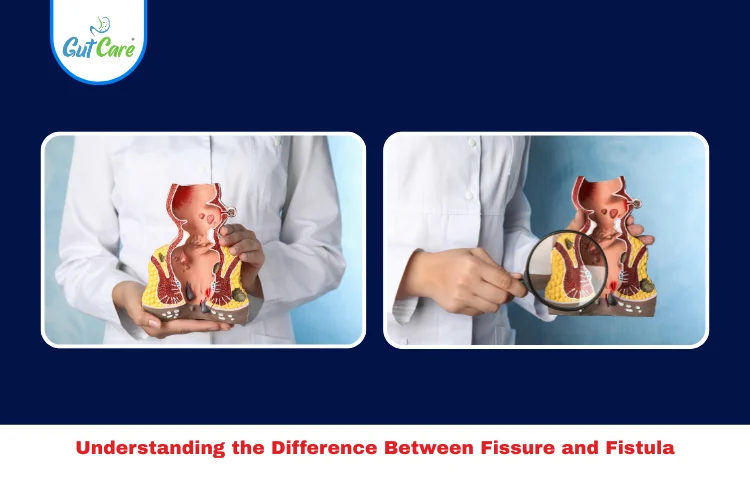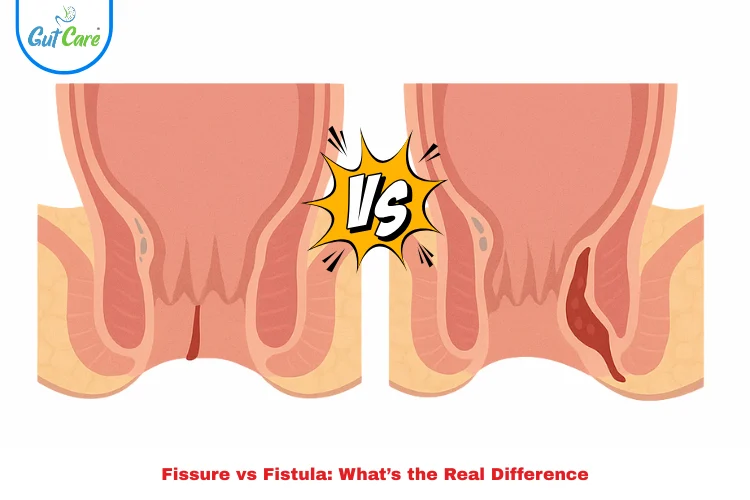An anal fistula is a painful and often persistent medical condition that affects the area around the anus. Many people confuse it with hemorrhoids or abscesses at first, but an anal fistula is more serious and typically requires medical treatment. In simple terms, it’s a small tunnel or tract that forms between the anal canal and the skin near the anus—usually as a result of a previous infection or abscess that didn’t heal properly.
Understanding the fistula meaning, recognizing early anal fistula symptoms, and identifying what causes them can help patients seek timely care and avoid complications. Let’s explore this condition in detail.
What Is a Fistula?
The term fistula refers to an abnormal connection or passage between two parts of the body that are not normally connected. A fistula can develop in various areas of the body, such as between organs or blood vessels. In the case of an anal fistula, the tunnel forms between the inside of the anal canal and the skin around the anus.
This condition usually occurs after an anal abscess—a pocket of infected pus—has drained, either on its own or with medical help. While the abscess might temporarily heal, a tunnel can remain, leading to repeated infections, pain, and discharge.
Common Anal Fistula Symptoms
Spotting the early signs of an anal fistula can prevent unnecessary suffering and long-term issues. Here are the most common anal fistula symptoms to watch for:
- Persistent pain or discomfort near the anus, especially during bowel movements or prolonged sitting.
- Swelling and redness around the anal opening, which may be tender to the touch.
- Pus or blood-stained discharge from a small opening near the anus. This discharge can stain underwear and may be foul-smelling.
- Itching and skin irritation, caused by constant moisture around the area.
- Low-grade fever or fatigue, especially if there’s an active infection.
These anal fistula symptoms can range from mild to severe and often come and go, which may delay diagnosis. However, if you experience more than one of these signs, it’s best to consult a doctor, particularly a colorectal specialist.
Anal Fistula Causes
There are several reasons why someone might develop a fistula. The most common anal fistula causes include:
- Anal abscesses: Around 50% of anal abscesses eventually lead to fistulas if not treated thoroughly.
- Chronic infections: Ongoing infections of the anal glands can damage tissue and create fistulous tracts.
- Inflammatory bowel diseases, such as Crohn’s disease, increase the risk of anal fistulas due to chronic inflammation.
- Tuberculosis, HIV, or sexually transmitted infections, though rare, can also be responsible in some cases.
- Trauma or surgery in the anal area can damage tissues and lead to fistula formation.
Understanding the root anal fistula causes is essential not only for treatment but also to prevent recurrence.
Types of Anal Fistula
Medical experts classify anal fistula types based on their location and how deeply they penetrate surrounding tissues. The main types include:
- Intersphincteric fistula: The most common type. The tunnel runs between the internal and external sphincter muscles.
- Transsphincteric fistula: This type passes through both sphincter muscles and opens on the skin around the anus.
- Suprasphincteric fistula: The tract arches above the external sphincter and may be harder to detect.
- Extrasphincteric fistula: The rarest type, starting from the rectum and bypassing the sphincter muscles entirely.
Understanding different anal fistula types helps doctors plan the right treatment and reduce the chance of further complications.
Fistula Diagnosis
Making an accurate fistula diagnosis involves both a physical examination and medical imaging. If your doctor suspects a fistula, they may perform the following:
- Visual and manual inspection: The doctor will look for signs of openings, discharge, or swelling.
- Proctoscopy or anoscopy: These tools allow doctors to see inside the anal canal to check for internal openings.
- MRI or endoanal ultrasound: These imaging tests help map the entire fistula tract, especially if it’s deep or complex.
- Fistulography: A contrast dye X-ray can sometimes be used, though it’s less common today.
Early and precise fistula diagnosis ensures that you receive the right treatment, minimizing long-term risks and discomfort.
Conclusion
Living with an anal fistula can be physically and emotionally draining. The constant pain, discharge, and recurring infections can interfere with your daily life. That’s why recognizing anal fistula symptoms, understanding the fistula meaning, and knowing the anal fistula causes are critical first steps toward recovery.
Depending on the severity, treatment may involve medications, such as fistula medicine to control infections or inflammation, or minor surgical procedures to close the tract and restore healthy tissue. Timely medical care ensures the best outcomes—and in many cases, a permanent cure.
If you or someone you know is experiencing symptoms, don’t delay seeking help. A proper fistula diagnosis today can prevent bigger problems tomorrow.
Book an appointment and Visit Us Today!
Frequently Asked Questions (FAQs)
1. How do I know if I have an anal fistula?
If you’re experiencing recurring pain, swelling, or pus-like discharge from the area around your anus, you may have an anal fistula. Some people also notice a small opening near the anal area that leaks fluid or blood. These are common anal fistula symptoms, and it’s important to consult a doctor for a proper fistula diagnosis.
2. Can an anal fistula heal on its own without treatment?
Unfortunately, anal fistulas rarely heal on their own. While symptoms may temporarily improve, the tunnel remains and often leads to repeated infections. That’s why early fistula diagnosis and treatment—sometimes involving fistula medicine or minor surgery—are necessary for lasting relief.
3. What medications are used to treat an anal fistula?
While surgery is often the most effective treatment, doctors may prescribe fistula medicine like antibiotics to treat infections or pain relievers to reduce discomfort. In conditions like Crohn’s disease, immunosuppressive drugs may also help reduce inflammation and manage symptoms.
4. Is surgery the only option for treating anal fistula?
Surgery is the most common and effective option, especially for complex or persistent fistulas. However, for simple cases or patients not fit for surgery, medical management and non-surgical approaches like fibrin glue, setons, or laser therapy might be considered.
5. What happens during a fistula diagnosis?
A doctor will first perform a physical examination to check for external openings or swelling. If needed, tests like MRI, ultrasound, or anoscopy may be done to locate the full extent of the fistula tract. A detailed fistula diagnosis helps determine the best course of treatment.
6. Can anal fistulas come back after treatment?
Yes, anal fistulas can recur, especially if not fully treated or if the underlying cause (like Crohn’s disease) persists. However, with proper fistula diagnosis and treatment by a colorectal specialist, the risk of recurrence can be significantly reduced.




